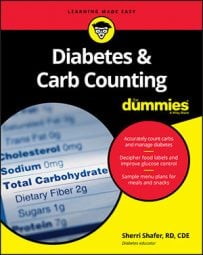Glucagon by injection is an appropriate treatment for severe hypoglycemia — for example, if the person with diabetes cannot safely swallow, displays severe lack of coordination or combativeness, loses consciousness, or has a seizure. Glucagon needs to be administered by a family member, friend, teacher, or co-worker. Potential helpers need to be identified and trained ahead of time so they know how to respond in the event of an emergency.
Glucagon kits (which expire annually) typically contain a vial of powder and a syringe that is pre-filled with a fluid. The powder in the vial is the glucagon. The glucagon needs to be mixed before using. First the fluid in the syringe must be injected into the vial of powder. Then the vial is swirled to dissolve the glucagon powder. Once mixed, the glucagon dose is drawn back into the syringe and can be administered by injection into the thigh or upper arm. The dose for children is smaller than the dose for adults.The instructions discussed here are simply to familiarize you with the concept and are not a substitution for proper in-person training by a healthcare provider.
If someone with diabetes has passed out or is having a seizure, call 911. Any person trained to give glucagon can do so but it is important to stay with the unresponsive person because glucagon can cause nausea and vomiting. It is critically important to protect the airway and prevent aspiration (vomit entering the lungs). Place the person in the recovery position by rolling him on onto his side with the upper leg bent. The knee should act as a support and prevent him from rolling. Gently tilt the chin upward to keep the air passage open.
For someone who has passed out, glucagon is the treatment of choice because you can't put any carbohydrates in the mouth of an unconscious person due to the risk of choking. Have a doctor, pharmacist, nurse, or diabetes educator review the use, procedure, and precautions of glucagon with you, then you in turn can train those who potentially may administer it.


